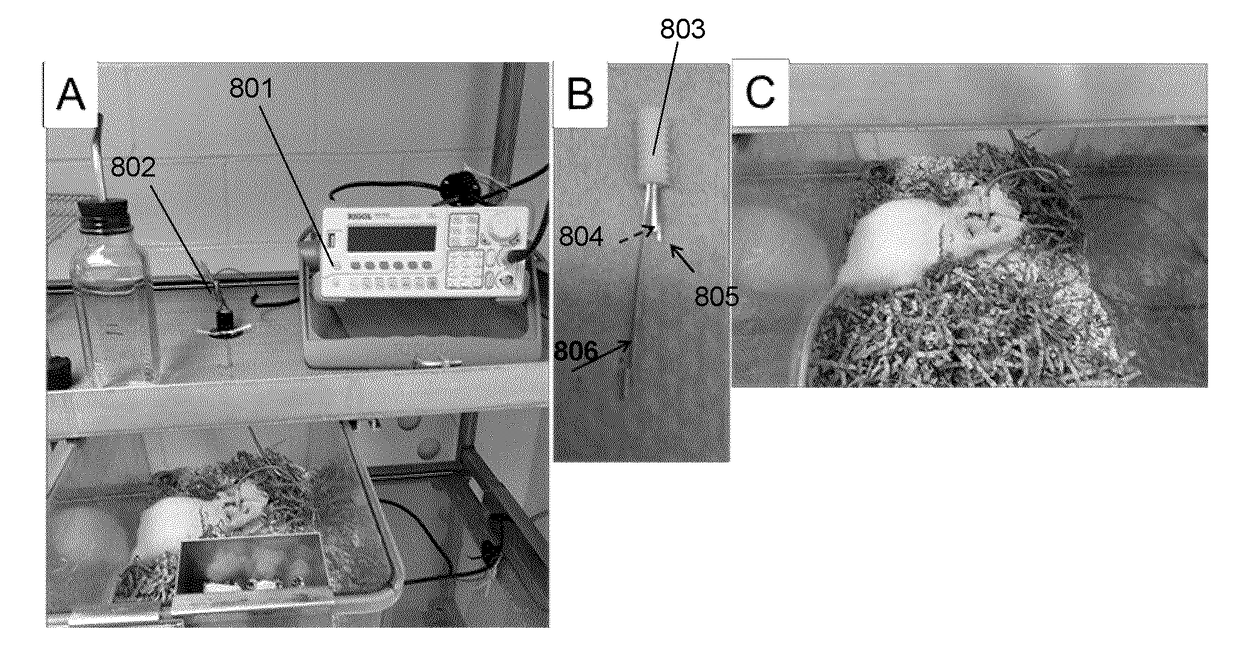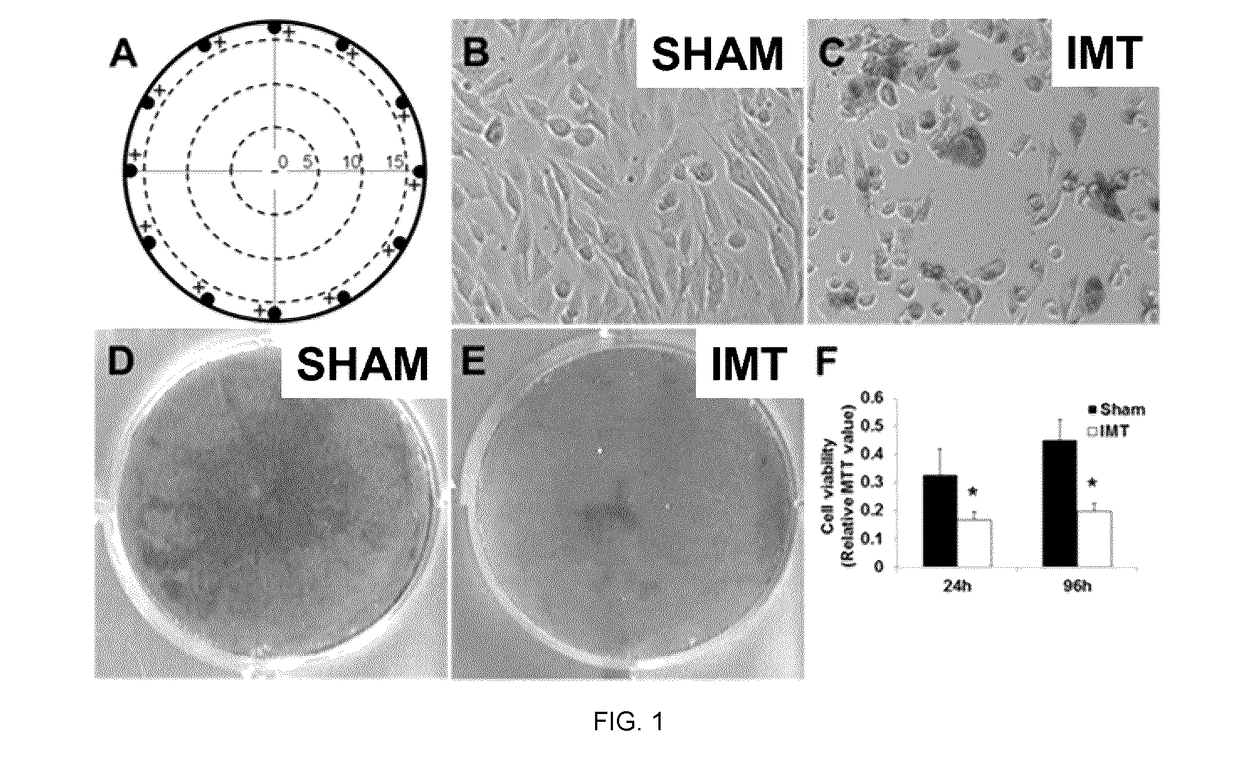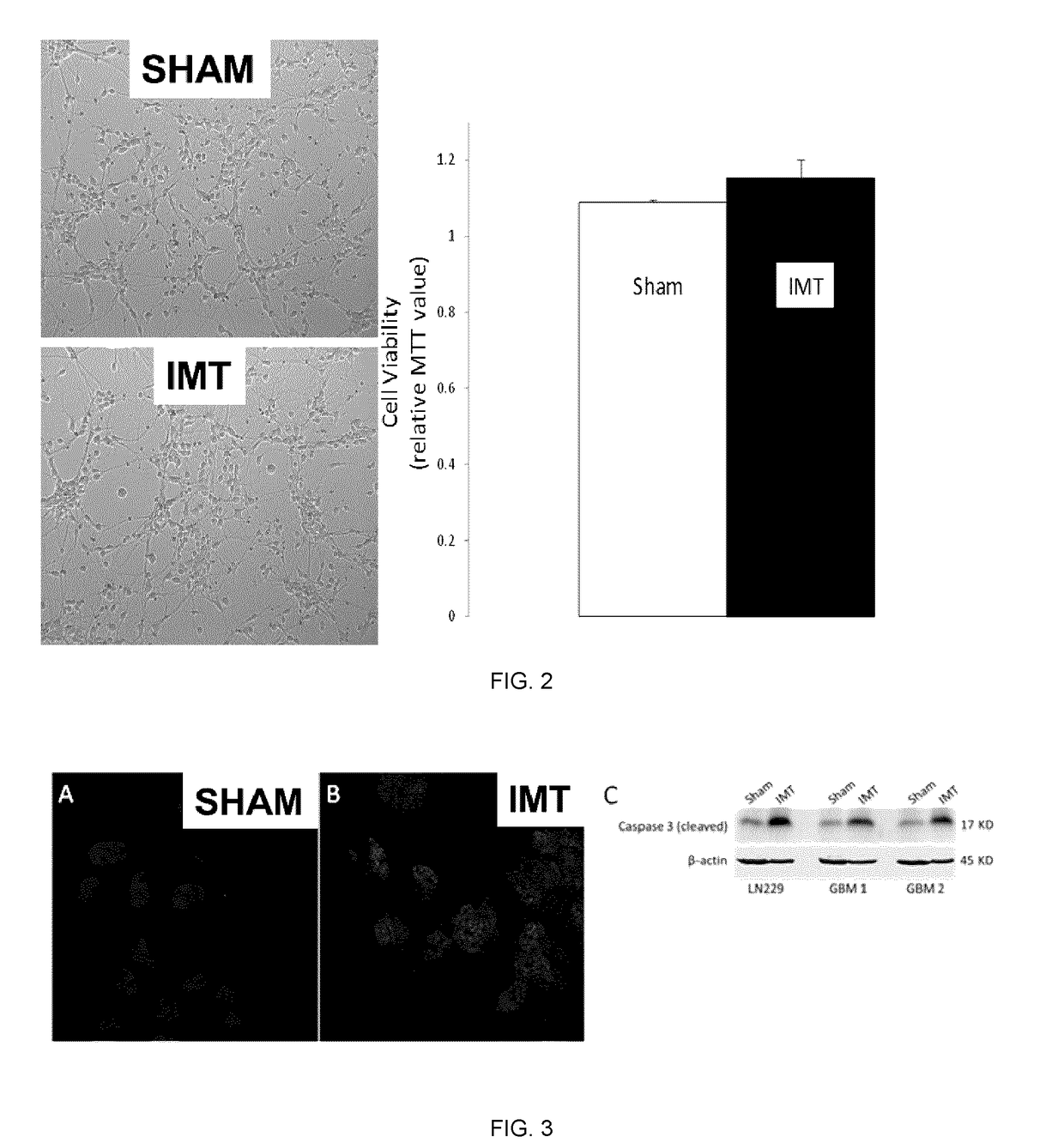Intratumoral modulation therapy
a technology of modulation therapy and intrauterine stent, which is applied in the field of intrauterine stent modulation therapy, can solve the problems of insufficient development of direct stimulation techniques for tumors of the nervous system, cancer cells are known to be vulnerable to changes in the electrochemical environment, and the effect of reducing side effects and maximizing benefi
- Summary
- Abstract
- Description
- Claims
- Application Information
AI Technical Summary
Benefits of technology
Problems solved by technology
Method used
Image
Examples
example 1
IMT Model
[0112]1. Materials and Methods
[0113]GBM Tissue Preparation and Cell Cultures
[0114]This study was approved by the Research Ethics Board at the University of Western Ontario (Approval #17290). GBM specimens were obtained at the time of operative resection and placed immediately into phosphate-buffered saline (PBS) with 0.5% fetal bovine serum (FBS; Life Technologies, Burlington, ON, Canada). The tissue was washed, digested and filtered through a 100-μm cell strainer. Samples were then centrifuged and resuspended in Dulbecco's modified Eagle's medium (DMEM; Wisent Bioproducts, St. Bruno, PQ, Canada) supplemented with 10% FBS, 1% non-essential amino acids and 1% penicillin / streptomycin (Life Technologies) before plating to a 35-mm dish for 30 min to allow blood cells to separate. The upper cell suspension was then transferred to two wells of a 24-well plate, freshly pre-coated with 10 μg / ml poly-L-lysine (Trevigen Inc., Gaithersburg, Md., USA) and incubated at 37° C. with 5% CO...
example 2
[0148]This example complements the results shown in FIGS. 4-8, 17, 18 and 20, to demonstrate the synergistic enhancement of gene-targeted therapy using high frequency IMT (200 kHz) and synergistic enhancement of high frequency IMT (200 kHz) when combined with TMZ.
[0149]High Frequency (200 kHz) IMT Enhances Gene Therapy in GBM
[0150]The pro-tumor chaperone, HSP27, was chosen as the therapeutic target. Panel A of FIG. 21 is a representative western blot analysis using primary GBM cells derived from 3 operative tumor specimens. HSP27 siRNA transfection produced a modest target knockdown that was markedly potentiated with concurrent IMT (200 kHz). Sham conditions, IMT and control siRNA were ineffective at reducing HSP27 levels. The levels of another tumor-promoting HSP, HSP90, was not affected by the targeted HSP27 and therapies. Mean densitometry values of FIG. 21B HSP27 and FIG. 21C HSP90 levels in GBM cells from the 3 patients confirmed the robust and specific knockdown of HSP27 that ...
example 3
MT Model
[0153]The F98 rat GBM model is used in this study. Briefly, F98 cells are derived from an anaplastic glioma in a Fischer rat and produce treatment-resistant brain tumors with GBM properties when implanted into syngeneic host brains (21). Adult male rats undergo stereotactic implantation of a commercial cannula / electrode combination bilaterally into the striatum. This MRI-compatible device permits infusion of the F98 cells and siRNA, with concurrent IMT, at the epicenter of the growing tumor. A reference electrode is tunneled through the nuchal skin for easy access. The IMT cables are suspended via a commutator, so that the animal can move freely within its home cage during treatment (see FIG. 10).
[0154]Adult Fischer rats underwent stereotactic implantation of F98 GBM tumor cells into bilateral striata. After 4 days of tumor growth in the brain, one side was treated for 7 days using IMT with a frequency of 200 kHz and amplitude of + / −2V. The contralateral tumor was fitted wit...
PUM
 Login to View More
Login to View More Abstract
Description
Claims
Application Information
 Login to View More
Login to View More - R&D
- Intellectual Property
- Life Sciences
- Materials
- Tech Scout
- Unparalleled Data Quality
- Higher Quality Content
- 60% Fewer Hallucinations
Browse by: Latest US Patents, China's latest patents, Technical Efficacy Thesaurus, Application Domain, Technology Topic, Popular Technical Reports.
© 2025 PatSnap. All rights reserved.Legal|Privacy policy|Modern Slavery Act Transparency Statement|Sitemap|About US| Contact US: help@patsnap.com



